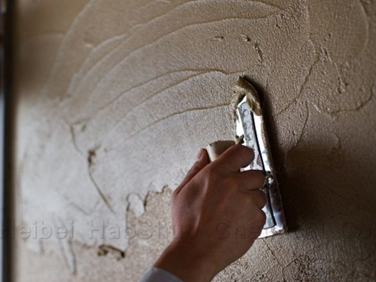Application of Hydroxypropyl Methylcellulose (HPMC) in Building Materials
1. Cement-based plaster
⑴ Improve uniformity, make plaster easier to apply, improve anti-sagging, enhance fluidity and pumpability, and improve work efficiency.
⑵ High water retention, extend the placement time of mortar, improve work efficiency, and facilitate the hydration and solidification of mortar to produce high mechanical strength.
⑶ Control the introduction of air to eliminate cracks on the coating surface and form an ideal smooth surface.

2. Gypsum-based plaster and gypsum products
⑴ Improve uniformity, make plaster easier to apply, improve anti-sagging, enhance fluidity and pumpability, and improve work efficiency.
⑵ High water retention, extend the placement time of mortar, improve work efficiency, and facilitate the hydration and solidification of mortar to produce high mechanical strength.
⑶ Control the consistency of mortar to form an ideal surface coating.

3. Masonry mortar
⑴ Hydroxypropyl methylcellulose manufacturers enhance the adhesion to the masonry surface, enhance water retention, and improve the strength of the mortar.
⑵ Improve lubricity and plasticity, improve construction performance; mortar improved with cellulose ether is easier to construct, saves construction time, and reduces construction costs.
⑶ Cellulose ether with extremely high water retention is suitable for highly absorbent floor tiles.

4. Board filler
⑴ Excellent water retention, extended open time, and improved work efficiency. High lubricant, easier to mix.
⑵ Improve shrinkage resistance and crack resistance, and improve the surface quality of the coating.
⑶ Improve the adhesion of the bonding surface and provide a smooth and smooth texture.

5. Tile adhesive
⑴ Easy to dry mix ingredients, no lumps, increase application speed, improve construction performance, save work time, and reduce work costs.
⑵ Improve tile efficiency by extending the open time and provide optimal adhesion.

6. Self-leveling floor materials
⑴ Provide viscosity and can be used as an anti-settling aid.
⑵ Enhance the pumpability of fluidity and improve the efficiency of floor paving.
⑶ Control water retention and shrinkage to reduce cracking and shrinkage of the floor.

7. Water-based coatings
⑴ Prevent solid precipitation and extend the shelf life of the product. High biological stability and excellent compatibility with other components.
⑵ Improve fluidity, provide good anti-splashing, anti-sagging and leveling properties, and ensure excellent surface finish.
Related News and Blogs
24
Aug., 2024
Let's meet Indonesia Coatings Exhibition 2024
The 10th Paintistanbul & Turkcoat Fair will be held at the Istanbul Exhibition Center in Turkey from May 8th...
19
Nov., 2021
What Causes A Cracked Putty Layer?
The one-off scraping thickness of the putty is directly proportional to the curing shrinkage strength, which increases in proportion to the tendency of the putty to crack.
04
Nov., 2021
Whether you are carrying out small repairs or building walls, knowing how to mix the mortar needs to be precise. If the mortar is too dry, the blocks will not stick together properly. If it is too wet, flowing mortar can spill out of the joints, resulting in wasted time and materials for clean-up.
25
Oct., 2021
The Effect of Winter Construction Temperature on Tile Adhesives
As we all know, tile adhesive is generally made from cement and mixed with various additives. It is mixed with water at the construction site and then applied to the wall or floor.

Get in Touch
Interested in how our HPMC can enhance your personal care formulations? Contact us to request a free sample and experience the superior quality of our cellulose ether products.